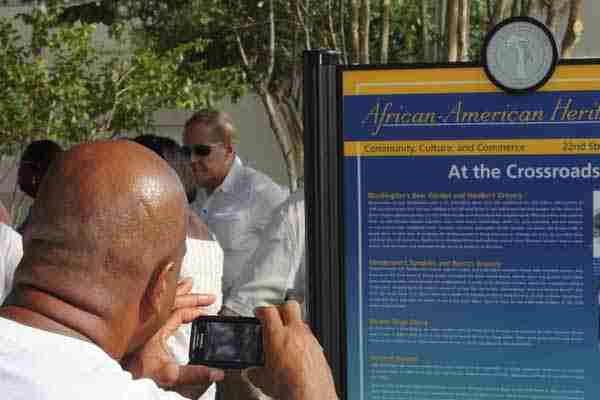By ANDREA ROBINSON
Special to South Florida Times
Want to know more about Central Florida’s black experience? Visitors to St. Petersburg can learn more about the evolution and progress of two structured trails that the city and a dedicated group of volunteers are promoting.
The trails are a part of the African-American Heritage Project, which identifies people and places significant to black history in St. Petersburg. The African-American Heritage Project Steering Committee is composed of community members, historians and other specialists from numerous local educational and cultural institutions who have a special interest in African-American history. Much of the work is spearheaded by the non-profit African-American Heritage Association of St. Petersburg Inc.
The story of African Americans in St. Petersburg begins with the pioneers and the arrival of the first African Americans in 1868 and weaves through the civil rights era ending in 1968.
The two urban walking trails – one on 22nd Street South Corridor and the other on Ninth Avenue S – provide a small glimpse into the varied culture of this South St. Petersburg neighborhood. The trails, in their first phase, focus on the neighborhood surrounding 22nd Street South Corridor and include businesses, churches, schools, social clubs, cemeteries, houses, and recreation areas.
The 22nd Street S. trail is titled “Community, Culture, and Commerce” and focuses on the rich cultural heritage of the neighborhood, community leaders, landmark businesses, and the evolution from the Jim Crow era to desegregation and the Civil Rights Movement. This trail focuses on the commercial corridor of 22nd Street South and includes local businesses, such as Harden’s Grocery and the Sno-Peak Drive In, as well as local entertainment facilities like the Royal Theater and the Manhattan Casino, which brought in nationally accredited jazz and Gospel musicians including Louis Armstrong, Count Basie, James Brown, Ray Charles, Duke Ellington and Ella Fitzgerald to name just a few.
The 22nd Street South trail also features Mercy Hospital, one of the first African-American hospitals in the area, and a number of medical offices built and occupied by doctors who played a significant role in breaking the color barrier and promoting the Civil Rights movement in St. Petersburg. The 22nd Street trail is about 1.25 miles and includes 10 trail stops.
The Ninth Avenue S. trail is titled “Faith, Family, and Education” and delves into the more personal aspects of life in the community, highlighting the local schools, housing stock, community organizations, and churches that enriched the social fabric of the neighborhood.
One of the spots featured on this trail is the Happy Workers Day Nursery and Kindergarten. Founded in conjunction with Trinity Presbyterian Church by Rev. Oscar Monroe “O.M.” McAdams, and his wife, Willie Lee, Happy Workers Day Nursery opened in 1929 with five children whose parents paid 25 cents a week for their care.
Another marker recalls events surrounding the 1968 sanitation strike, in which striking workers marched on City Hall more than 40 times during a 116-day walkout. Helmeted officers confronted the marchers. City officials fired the workers, and the police arrested protest leader Joe Savage. A.D. King, the brother of Dr. Martin Luther King Jr., who had been assassinated a few weeks earlier, joined the marchers. So did former Southern Christian Leadership Conference president Ralph Abernathy.
FOR MORE INFORMATION
To get more details about the African-American Heritage Project, including touring times, contact the Historic Preservation Division for the city of St. Petersburg, 727-892-5451 or email, hispres@stpete.org












No Comment